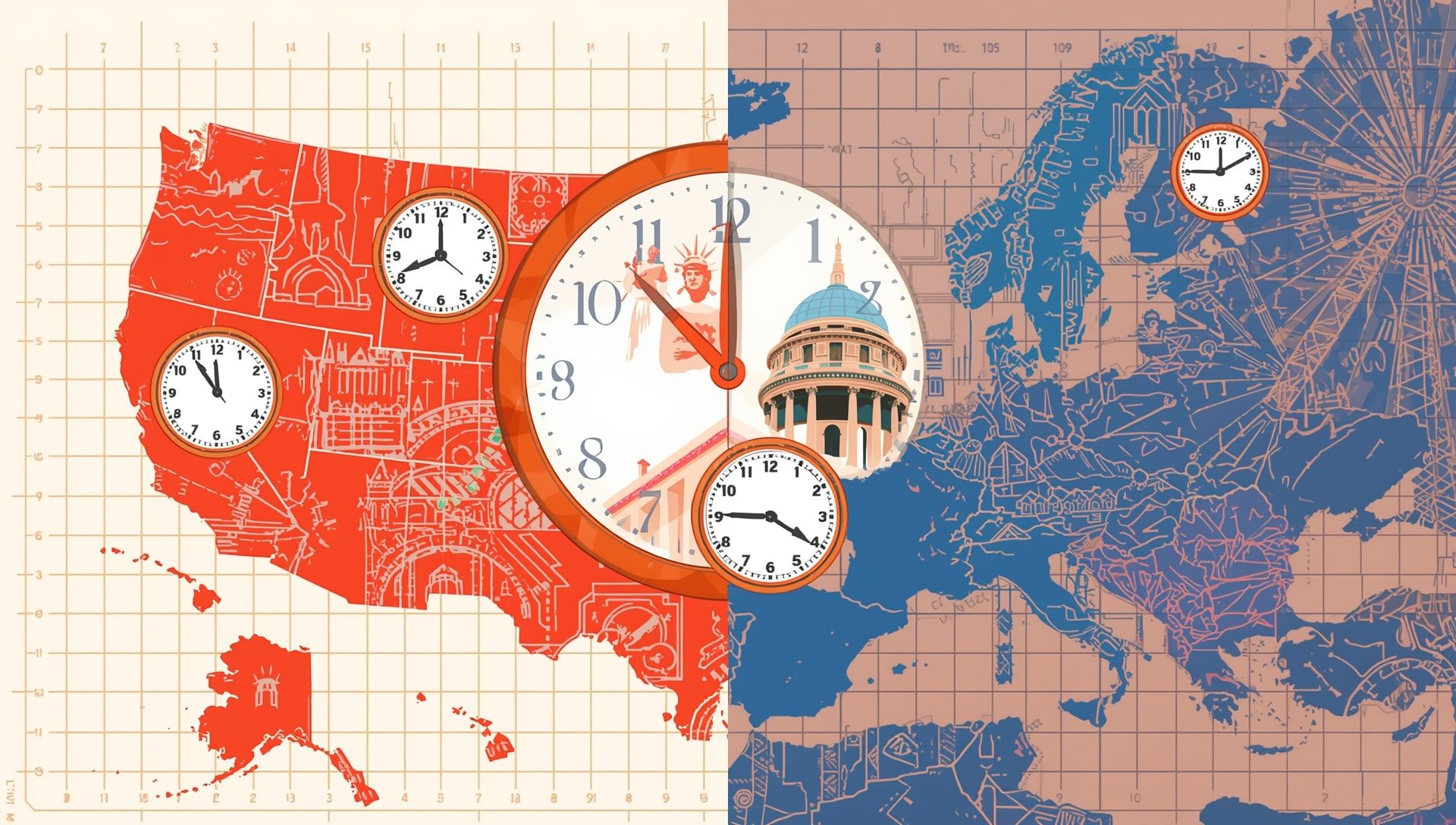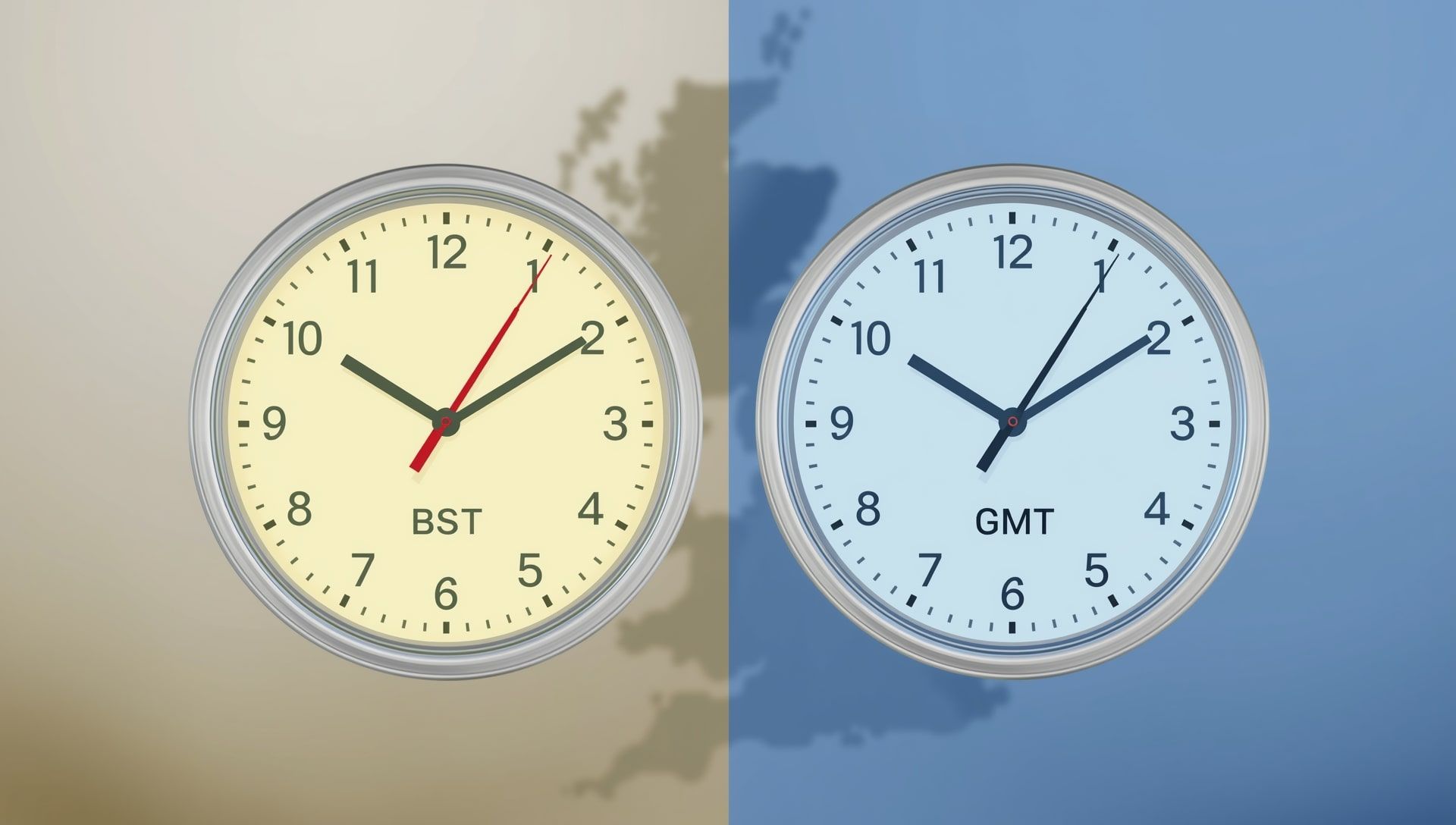For decades, people across Europe have moved their clocks forward in March and back again in October. The goal was simple: make better use of daylight during the warmer months. But in recent years, this long-standing tradition has come under serious scrutiny. As more citizens, scientists, and lawmakers question its benefits, one major question hangs in the air: is the European Union (EU) finally preparing to abolish Daylight Saving Time altogether?
How Daylight Saving Time Took Root in Europe
The practice of shifting the clock forward by an hour in spring originated during the early 20th century. It became widespread after World War II as a way to conserve energy and make better use of natural light. Over time, it evolved into a seasonal ritual across the continent, similar to what’s described in the history and origins of DST.
In 1980, the European Economic Community, now the European Union, adopted a unified approach. This ensured that all member countries switched their clocks on the same days, avoiding chaos for businesses, travelers, and broadcasters. Since then, the EU has maintained synchronized start and end dates: the last Sunday in March and the last Sunday in October, as also noted in the world clock standards.
Why the EU Began Reconsidering the Practice
By the 2010s, new evidence began to challenge the idea that Daylight Saving Time provided any meaningful energy savings. Studies showed that while people might use less lighting, they often consumed more heating or air conditioning—something that echoes findings in energy conservation research. Public opinion also shifted as people reported feeling tired and disoriented after each change.
In 2018, following strong public response and parliamentary debate, the European Commission launched a survey across all EU member states. The result was striking: more than 80 percent of respondents said they wanted to stop changing clocks twice a year. This overwhelming feedback became the catalyst for a proposed reform.
The Proposal to End Daylight Saving Time
In September 2018, the European Commission announced plans to abolish the mandatory clock changes. The idea was not to impose a single time for all of Europe, but to let each country decide whether to remain on “summer time” (DST) or “winter time” (Standard Time) permanently—a distinction explained further in standard time vs. DST.
The initial proposal suggested implementation by 2019, but political negotiations quickly slowed the process. Member states needed time to study how permanent time choices would affect travel, communication, and trade between neighbors.
Member States’ Divided Opinions
The challenge with abolishing Daylight Saving Time lies in coordination. Europe is home to 27 countries, spread across three primary time zones. If some countries choose to stay on summer time while others revert to standard time, the continent could become a patchwork of different schedules.
- Southern countries like Spain and Italy leaned toward permanent summer time to enjoy longer evenings.
- Northern countries, including Finland and Denmark, favored permanent standard time to maintain brighter mornings.
- Central European countries such as Germany and France remain undecided, preferring EU-wide consistency before committing.
The European Parliament approved the proposal in 2019, but implementation was postponed until at least 2021. Since then, the issue has been repeatedly delayed due to concerns about coordination, the pandemic, and other policy priorities.
How the Current System Works
At present, the EU still follows its long-established Daylight Saving Time schedule, which can be compared using tools like the time zone converters:
| Year | Start of DST (Clocks Forward) | End of DST (Clocks Back) | Notes |
|---|---|---|---|
| 2025 | March 30 at 01:00 UTC | October 26 at 01:00 UTC | Last Sunday in March and October |
| 2026 | March 29 at 01:00 UTC | October 25 at 01:00 UTC | Current EU-wide pattern |
| 2027 | March 28 at 01:00 UTC | October 31 at 01:00 UTC | No official changes planned yet |
| 2028 | March 26 at 01:00 UTC | October 29 at 01:00 UTC | Same synchronization expected |
The Arguments for Ending DST
Many scientists and citizens believe that ending the clock changes would bring significant benefits. Here are the most common arguments:
- Improved Health: Eliminating time changes would help stabilize sleep patterns, reduce fatigue, and lower the risk of heart attacks linked to disrupted circadian rhythms, as discussed in health impact studies.
- Better Productivity: A consistent daily rhythm could improve concentration and workplace performance.
- Fewer Accidents: Research shows a slight increase in road accidents immediately after clock changes each spring.
- Psychological Comfort: Many people dislike the sudden shift, especially in early spring when mornings become darker again.
- Modern Energy Systems: The original purpose of saving electricity no longer applies in an era dominated by efficient lighting and advanced energy management.
These points have resonated strongly across the continent, leading to a broad consensus that the twice-yearly switch is outdated.
Reasons Some Want to Keep It
Despite growing support for abolition, several governments and experts argue that Daylight Saving Time still has value in certain contexts:
- Tourism and recreation industries benefit from longer daylight hours in the evening.
- Evening light reduces electricity use in households and public spaces during summer.
- Some believe that changing times twice a year helps balance daylight in both morning and evening hours.
- Coordinating time zones across borders remains easier when countries follow the same pattern, similar to how time zone maps visualize global differences.
These arguments keep the discussion alive, especially among nations closer to the equator where daylight variation is less extreme.
Public Opinion Across Europe
While most Europeans support ending the clock changes, opinions differ by latitude and lifestyle. In southern Europe, longer summer evenings are cherished for social gatherings, dining, and outdoor life. In northern countries, the winter darkness is already intense, so many prefer early daylight over late sunsets.
In countries like Germany, Austria, and France, surveys show that people are divided—some want to keep brighter evenings, while others value consistent sleep cycles and natural mornings.
The Challenges of Abolishing DST
The biggest challenge is coordination among EU member states. A lack of synchronization could cause:
- Scheduling confusion for airlines, railways, and international businesses.
- Complexity for cross-border workers who commute between countries with different time systems.
- Potential disruption to financial markets and digital systems relying on uniform time stamps.
- Inconsistent daylight schedules affecting tourism and agriculture.
The European Commission has repeatedly stated that it prefers a coordinated approach to prevent a “time patchwork” across Europe. However, achieving that agreement has proven difficult.
How the Change Might Roll Out
If the EU eventually implements the reform, here’s what could happen:
- The European Parliament and the Council of the EU would finalize the legal framework allowing countries to choose their permanent time.
- Each member state would then decide whether to remain on summer time or winter time permanently.
- A transition date would be set, after which no further clock changes would occur.
- Neighboring countries would be encouraged to coordinate to avoid economic and logistical disruption, similar to guidance in upcoming DST updates.
The transition could take one to two years to organize, giving industries and citizens time to adapt.
Informational Overview
The following table summarizes the core issues surrounding the EU’s potential abolition of DST:
| Aspect | Current Situation | Proposed Change | Potential Impact |
|---|---|---|---|
| Time Changes | Twice per year (March and October) | End biannual clock changes | More consistent sleep and schedules |
| Health | Disruption during transitions | Stabilized circadian rhythms | Improved alertness and well-being |
| Energy | Minimal savings in modern context | No measurable difference | Energy neutrality expected |
| Business Coordination | EU-wide synchronization | Risk of varied national decisions | Possible travel and trade complications |
| Public Opinion | Majority favors ending DST | Countries choose preferred time | More democratic control over schedules |
What Happens If the EU Does Nothing?
If no final agreement is reached, the current system will simply continue. That means Europeans will keep moving their clocks twice a year—something that many people are growing impatient with. Despite the widespread desire for change, governments have yet to find common ground on how to move forward.
For the average citizen, this delay feels symbolic of how difficult EU-wide reforms can be. Even when public opinion is clear, coordination among 27 sovereign governments takes time and compromise, much like organizing major international events.
How It Affects the United Kingdom and Neighbors
Since leaving the EU, the United Kingdom is no longer bound by EU time directives. However, it continues to observe Daylight Saving Time on the same schedule as the EU. If the EU eventually abolishes DST while the UK keeps it, travelers could experience differing time changes twice a year between London and major EU capitals. This adds another layer of complexity for cross-border business and tourism.
The Broader Global Context
Europe isn’t alone in reconsidering the usefulness of DST. Countries like the United States, Canada, and Australia have all debated similar reforms. Many regions have already opted out entirely, keeping clocks stable year-round, as shown in the military time zone chart. As global communication and commerce rely increasingly on precise digital timekeeping, the traditional clock change feels more like a historical artifact than a necessity.
Where Things Stand Now
At this point, the EU’s plan to abolish Daylight Saving Time remains unresolved. While the European Parliament voted in favor of ending it, the Council of the European Union, the body representing national governments, has not reached a final consensus. The topic has been overshadowed by larger issues such as economic recovery, security, and climate policy.
Nevertheless, the public’s preference for stability remains strong. As technology evolves and lifestyles change, the push for a consistent, modern time system continues to gain support, aligning with global calendar reforms and planning needs.
Time for a Decision
Whether or not the European Union finally abolishes Daylight Saving Time will depend on political will and public pressure. Many see it as a matter of common sense and modern convenience, while others caution that hasty action could cause regional confusion. For now, Europe’s clocks will keep changing, even as the debate grows louder.
The issue captures something deeper than timekeeping; it reflects how societies adapt traditions to fit contemporary life. One day soon, the EU may finally choose to stop the clock changes once and for all. Until then, Europeans will keep asking twice a year: is this the last time we move our clocks?









